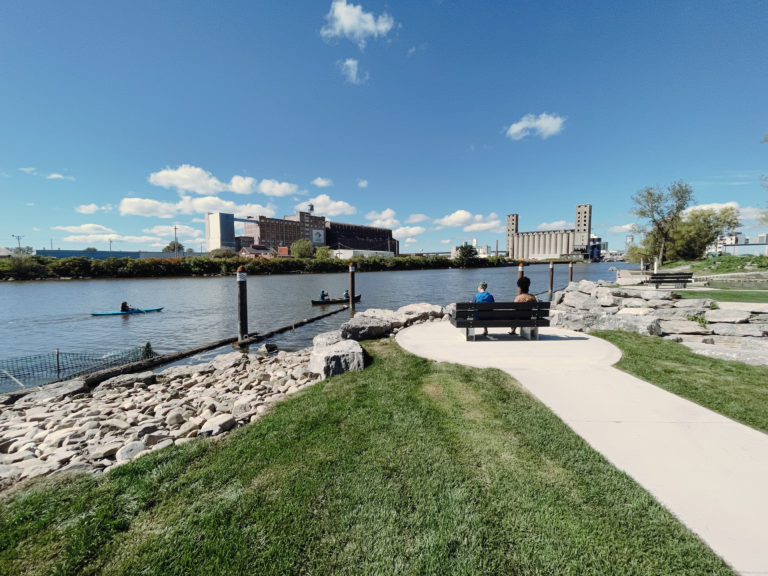The Buffalo River was declared “dead” in 1967. Area waters began recovery due to the Clean Water Act of 1972.
In 1987, the International Joint Commission designated the Buffalo River as an “Area of Concern.” Friends of the Buffalo River, now Buffalo Niagara Waterkeeper, focused on improving the environmental health of the Buffalo River and local tributaries.
Latest Update: Over $2.5 Million to Continue Buffalo River Restoration
Keeping Time on the Buffalo River
The Buffalo River Water Quality
The Buffalo River currently has a “Class C” designation. According to NYSDEC, historically, the best use of the Buffalo River has been identified as “fishing, with waters suitable for fish propagation and survival.”
In addition, “water quality shall be suitable for primary and secondary contact recreation, although other factors may limit the use for these purposes.” The stream classification of the Buffalo River continues to be debated within the Remedial Advisory Committee, as the actual river use (swimming, wading, fish consumption, etc.) is not reflected by the current designation.
Historically, factors affecting water quality in the Area of Concern (AOC) included industrial discharges, combined sewer overflows, agricultural run-off, and re-suspension of historically contaminated sediments. Today, the major factors that are known to affect water quality in the AOC are: low dissolved oxygen, turbidity, heavy metals, and bacterial contamination.
The Buffalo River Sediment Remediation
Two forms of contamination affect the Buffalo River watershed: contaminated river bottom sediments and upland contamination associated with inactive hazardous waste sites or current industry.
Contaminated Sediments
From the late 1800s through the chemical revolution of the 1940s and 195’s, industry boomed along the Buffalo River. One unintended consequence was the legacy of highly contaminated river sediment. The River was used as a water supply for industrial cooling, shipping, and waste disposal and the sediments became contaminated with numerous metals, pesticides, PCBs, PAHs, and industrial organic materials.
Since the Buffalo River is a navigable channel maintained by the Army Corps of Engineers, navigational dredging occurs every two to three years. While this dredging activity removes some of the contaminated sediment from the center of the River, it also allows for the temporary re-suspension of contaminants into the water column and the exposure of the worst-contaminated “hot spots” adjacent to the navigation channel.
Sediments deposited within the river from the upper watershed continue to demonstrate a small level of ongoing contamination (i.e.: lead, mercury, PAHs) as determined by recent surface sediment samples and analysis. In addition, other ongoing sources include: sloughing of historical contamination from outside the dredge channel and leaching at inactive hazardous waste sites or existing industrial sites.
Since 2005 a significant amount of local, state, and federal investment has been made dedicated to the assessment and planning associated with sediment remediation. Multiple projects are on target to start remediation in 2010.
Upland Contamination
Contaminated seepage from hazardous waste sites into groundwater has the potential to affect the Buffalo River. Forty-five inactive hazardous waste sites have been identified in the Buffalo River watershed. Twenty-one of those sites have been delisted, nine have been “closed” with continued management, and remedial activity/long term operation and maintenance continues at the remaining sites.
- Dissolved Oxygen
- Turbidity
- Heavy Metals
- Bacterial Contamination
- Water Quality
- Habitat
- Fish
- Wildlife
- Buffalo Blueway
The NYSDEC water quality standard for non-trout waters, such as the Buffalo River, is “the minimum daily average shall not be less than 5.0mg/L, and at no time shall the DO concentration be less than 4.0mg/L.” DO levels in the AOC are routinely less than 4.0mg/L particularly in the dredged portion. Low DO levels are detrimental to the survival of fish and wildlife populations.
NYSDEC standard for a “Class C” stream is “no increase that will cause a substantial visible contrast to natural conditions.” The Buffalo River is generally turbid due to the low flow rates and inputs from upstream sources and gets more so after storm events. High turbidity may result from increased sedimentation linked to the lack of vegetation and wetlands throughout the watershed. Shoreline vegetation and wetlands act as filters to reduce the amount of sediment entering the water from surface runoff and also help to prevent streambank erosion.
Inactive hazardous waste sites and discharges from industrial wastewater treatment facilities have been linked to heavy metals in the water column. The metals of concern include arsenic, barium, copper, iron, lead, manganese, zinc, and cyanides.
Even though there are no officially designated bathing beaches in the AOC, and no official impairment of BUI #10 – Beach Closings, primary and secondary contact with the River frequently occurs in the warm weather months. Fecal coliform continues to be a problem in the Buffalo River and have been linked to non-point sources in the upper watershed (from failing septic systems and stormwater runoff). Combined Sewer Overflows (CSO) are point sources of fecal coliforms to the Buffalo River. There are 33 CSOs in the watershed that ultimately discharge into the River.
The Buffalo River currently has a “Class C” designation. According to NYSDEC, historically, the best use of the Buffalo River has been identified as “fishing, with waters suitable for fish propagation and survival.”
In addition, “water quality shall be suitable for primary and secondary contact recreation, although other factors may limit the use for these purposes.” The stream classification of the Buffalo River continues to be debated within the Remedial Advisory Committee, as the actual river use (swimming, wading, fish consumption, etc.) is not reflected by the current designation.
Historically, factors affecting water quality in the Area of Concern (AOC) included industrial discharges, combined sewer overflows, agricultural run-off, and re-suspension of historically contaminated sediments. Today, the major factors that are known to affect water quality in the AOC are: low dissolved oxygen, turbidity, heavy metals, and bacterial contamination.
Writings by European missionaries and explorers from the 1600s describe the lower Buffalo River as an extensive marsh with temporary hunting and fishing camps built by native peoples along its shore.
The area began to rapidly develop in the late 1700s and the River provided a suitable spot to dispose of sanitary wastes. The Buffalo River was a small stream with intermittent flows during the summer that was just deep enough to float a canoe. The River originally spread out to form large cattail marshes at its mouth.
In 1820, the River was dredged to allow it to be used as the terminus of the Erie Canal. The Erie Canal was built and the industrialization of the River began. Grain elevators were built along the River and commerce spread up the river. A variety of small manufacturing enterprises were built along the River which was dredged wider, deeper, and further upstream. The wetlands that had surrounded the River and provided critical habitat were eliminated due to the dredging and development.
Hardening of the shoreline in much of the AOC has greatly limited the available habitat for upland wildlife. Attempts have been made in recent years to improve the quantity and quality of riparian habitat along the River. The Buffalo River Habitat Restoration Demonstration Project created four natural habitat parks on formerly industrialized land. These areas are now more hospitable to upland wildlife and waterfowl. Efforts are ongoing to acquire more land adjacent to the River to be used as wildlife habitat.
By the 1920s, the Buffalo River had become one of the most polluted rivers in the United States.
A biological survey of the River by NYSDEC concluded that it was “obviously unfit for eggs or young of fish, and seemed to contain no form of fish life.” Since then, improvements have been made to reduce the amount of pollution entering the River and to allow it to become more hospitable to aquatic organisms. By the 1990s over 30 species of fish were observed in the area and the River was routinely used by fishermen. Due to lack of instream habitat (from routine dredging) the River is still not adequate for fish habitat and reproduction.
While populations may be improving in the River, the health of the fish is questionable. NYS Department of Health currently has a health advisory that recommends eating no carp from the Buffalo River and Harbor due to elevated PCB levels. Fish in the Buffalo River are routinely found to have tumors and other abnormalities.
Historically, land use adjacent to the AOC was largely industrial which did not provide suitable habitat for wildlife.
As industries left the area and the land became vacant, vegetation grew and wildlife began to repopulate the area. No official survey has been done to determine the types and numbers of mammals in the area but deer, raccoons, and other small mammals are often observed. A recent study of birds performed by The Buffalo Ornithological Society identified over 50 species inhabiting the AOC. A survey of herpetological populations (i.e.: amphibians and reptiles) is currently underway to assess species richness and diversity along the River.
The majority of the land adjacent to the AOC is not conducive to public access or recreation.
Most of the land is either privately owned, contaminated, or inaccessible. While fishing access points are available upstream of the AOC, there are limited places available within the designated AOC. The most frequented access points include CSO outfalls and rail bridges. As fish health and populations increase, additional access is needed for the public to adequately enjoy this natural resource.
The Erie County Department of Environment and Planning has initiated four projects along the Buffalo River to improve habitat and public access.

Beneficial Use Impairments
What’s a Beneficial Use Impairment (BUI)?
According to the EPA, an impairment of beneficial uses means a change in the chemical, physical or biological integrity of the Great Lakes system sufficient to cause significant environmental degradation. All BUIs that have been designated for an Area Of Concern must be removed for the area to be considered restored and begin the delisting process. Buffalo Niagara Waterkeeper is the local coordinator to remove impairments from the Buffalo River. Five have been removed since 2018.
Click the icons on the checklist below to learn more about each BUI along the Buffalo River. For additional information on each BUI along the Buffalo River, visit the EPA website below.



